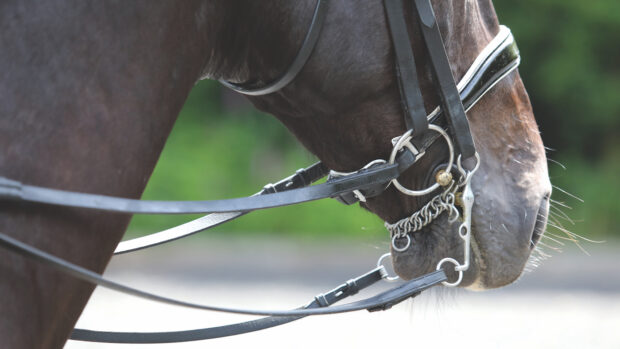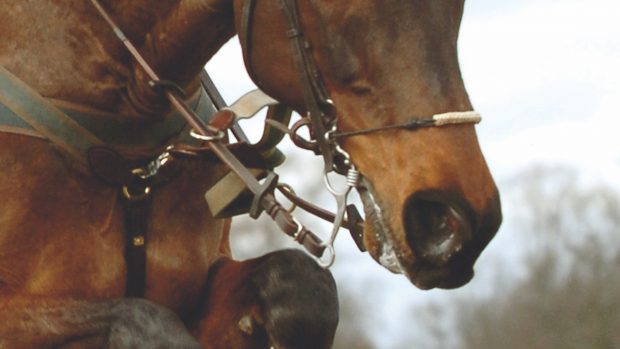Q: I have owned my 15.1hh, Irish Draught-Thoroughbred, eight-year-old mare, whom I compete in novice ridden classes, for six years. She has always had trouble completely accepting the bridle, resulting in back problems. I have tried both the double bridle and the rugby pelham, but she has a big tongue and is only truly happy and obedient in a hackamore. In the show jumping world you can compete in a hackamore, but not showing. Why is this?
CN, Herts
H&H asked Adrianne Smyth, hon company secretary and board member of the British Show Horse Association (BSHA), for her view on this situation.
“This is a very interesting and challenging question, as it deals not only with established tradition, but also horse welfare,” she says.
“From our point of view, there are at present no ‘laid down’ rules for bits and bridles in the BSHA, only recommended rules, which state that a double bridle or pelham should be used for open classes, and a snaffle may be used for novice classes; some competitors use a variation of these bits. A French link mouthpiece or a specially made bit with a small mouthpiece may suit your horse.
“I understand that in America, bitless bridles are becoming more popular in showing classes. However, in our classes, the judges ride the competitors’ horses, and as such a certain standard of schooling and acceptance of the bit is required,” Adrianne continues.
“It would therefore not be considered acceptable to present a horse in a hackamore or other bitless bridle in a UK showing classes, although I do sympathise with your situation. Please write directly to the board of the BSHA, as this subject could be placed on the agenda for discussion, either at a board meeting or the AGM.”
H&H also spoke to bitting expert Tricia Nassau-Williams of the Worshipful Company of Loriners, for advice.
“For clarity, bitless bridles can be divided into three main groups,” Tricia explains.
Western hackamore, with a solid bosal — the braided loop around the nose.
Bitless bridle, consisting of a form of noseband with a metal cheek each side.
Nose bridles, for example the Scawbrig. These are modified drop nosebands with additional leather work that fits behind the horse’s jaw.
“The bitless bridle with cheeks is often referred to as an English hackamore,” continues Tricia.
“It will act on the horse’s poll, nose and back of the jaw, encouraging the horse to lower his head carriage and, to a degree, encouraging flexion. For a horse with a damaged mouth, or for endurance horses, these bridles provide a welcome relief from any item being in the mouth, while some horses, like Eddie Macken’s Boomerang, simply prefer their action. Bitless bridles are not a soft option, though, and are reliant on rider competence.
“In terms of your horse’s mouth conformation, some bits that take into consideration tongue pressure include the Myler range, the KK Conrad Springer, and the lesser-known Segundo bits. Plastic mouth pieces, such as the Happy Mouth range, can also be very helpful; please seek specialist advice from a bitting expert. For anyone experiencing bitting problems, consider areas like bridle (and, in particular, noseband) fit, dental issues, saddle fit and potential anatomical problems, and always seek expert advice.”
Information
BSHA Tel: 01462 437770 www.britishshowhorse.org
Worshipful Company of Loriners Tel: 01386 751695 www.loriner.co.uk
This Q&A was first published in Horse & Hound (9 August, ’07)



